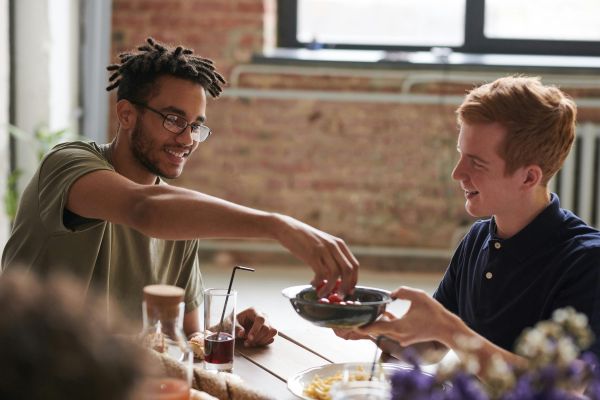In Southern Brazil, communities have long relied on rituals to maintain unity and identity. Among these, shared fragrance rituals stand out as a subtle but powerful way of connecting people.
The act of using herbs together — whether for cleaning, celebration, or spiritual protection — weaves invisible ties between families, neighbors, and generations.
The Social Power of Scent
Fragrance has a unique ability to shape atmosphere and emotion. A shared scent in a gathering space can make people feel calm, joyful, or spiritually connected without anyone needing to speak.
In Gaúcho culture, the use of marcela, rosemary, boldo, and citrus peels creates familiar sensory landscapes that bring people together naturally.
When several homes in a neighborhood use similar herbs, the surrounding air becomes a kind of communal signature.
Walking through these spaces feels comforting, as if everyone shares in a collective identity expressed through fragrance.
Fragrance in Communal Celebrations
Community festivals and religious events often revolve around shared rituals with herbs. During Easter, families gather to collect marcela from the fields.
Later, its sweet aroma fills homes, streets, and churches during celebrations. This isn’t just tradition — it’s a shared sensory experience that strengthens bonds between participants.
Similarly, local patron saint festivities use laurel, rosemary, and incense to perfume communal spaces. These scents mark the celebration as special, creating a sensory memory that everyone in the community carries with them year after year.
Collective Rituals and Identity
Participating in the same fragrance rituals builds a sense of belonging.
When families burn rosemary for purification before a gathering or share herbal teas at the end of a celebration, they’re reinforcing their shared cultural identity. These rituals become markers of who they are as a community.
Even people who may not know each other personally can feel connected through these shared sensory cues. A familiar scent drifting through the air can communicate cultural values and shared heritage instantly.
Passing Traditions Through Group Participation
Unlike solitary practices, communal fragrance rituals allow knowledge to spread naturally. Children watch adults collect herbs, prepare simmer pots, or decorate spaces with aromatic plants. They learn by observing and participating, not through formal instruction.
This shared participation ensures that traditions don’t fade with time. Everyone plays a role, from the elders who know the meanings of each herb to the younger ones who carry the practices into the future. The rituals themselves become living classrooms.
Scent as Emotional Glue
Shared scents often evoke shared emotions. The smell of marcela drying in the sun might remind many people of family Easter gatherings.
The aroma of boldo simmering could bring memories of winter nights spent together. These common experiences strengthen emotional ties between community members.
When people associate specific fragrances with feelings of safety, warmth, or celebration, those scents become emotional anchors. This emotional glue is what keeps communities tightly knit, even as modern life changes how people live.
Rituals in Modern Urban Communities
Urbanization has changed many aspects of Gaúcho life, but fragrance rituals continue to adapt.
In cities, people may use essential oil diffusers, candles, or room sprays made with traditional herbs. While the tools are modern, the scents remain the same, preserving cultural identity in new contexts.
These adapted rituals help urban communities maintain their cultural bonds. A gathering scented with rosemary and citrus can still feel like home, even in a high-rise apartment far from the Pampas fields.
Seasonal Fragrance Events
Communities often organize seasonal events where herbs play a central role. Harvesting marcela in spring, preparing herbal bundles in summer, or lighting fragrant fires in winter are activities that follow the rhythm of the land. Participating together strengthens both social and ecological awareness.
These events become landmarks in the community calendar. They give people opportunities to reconnect, share stories, and pass on knowledge, all while surrounded by meaningful scents.
Shared Scents in Spiritual Practices
Fragrance rituals are also deeply connected to spirituality. Burning herbs during collective prayers or cleansing ceremonies is common in Gaúcho communities.
The rising smoke carries both fragrance and intention, creating a sense of shared purpose and sacred space.
These moments often transcend individual beliefs. The act of sharing a scented ritual itself becomes the unifying element, reminding everyone of their connection to each other and to something larger than themselves.
The Unspoken Language of Fragrance
Fragrance acts as a silent language within communities. A whiff of rosemary in the evening might signal preparation for a family gathering.
The scent of marcela on the wind could mean Easter is near. These unspoken cues allow people to understand and feel part of a shared cultural rhythm without needing words.
This shared olfactory language strengthens community bonds subtly but effectively. It’s a language that everyone understands, regardless of age, background, or social role.
Conclusion
Shared fragrance rituals are much more than pleasant traditions. They’re powerful cultural tools that help communities stay connected, transmit knowledge, and reinforce identity.
Through collective celebrations, emotional memories, and seasonal rituals, scents act as invisible threads weaving people together.
In Gaúcho culture, fragrance isn’t just personal — it’s communal. By continuing these rituals, communities keep their heritage alive, not through grand ceremonies, but through the everyday power of shared scents.
